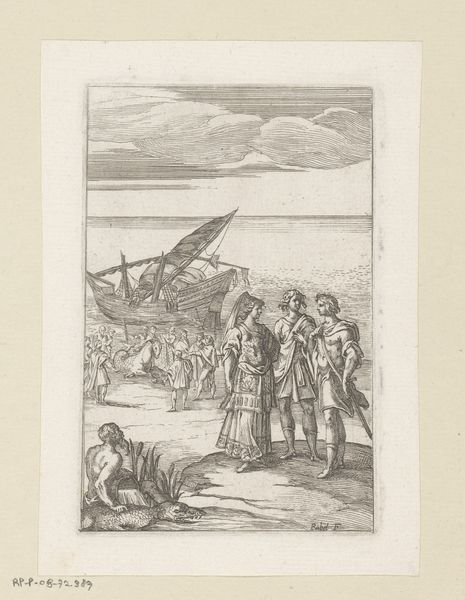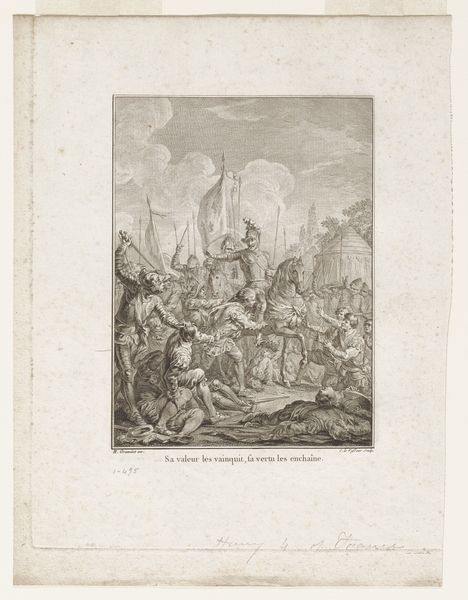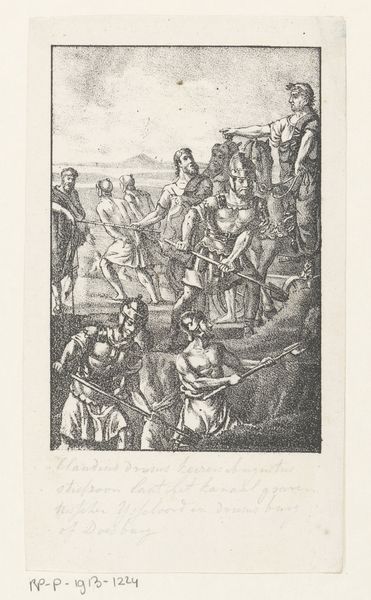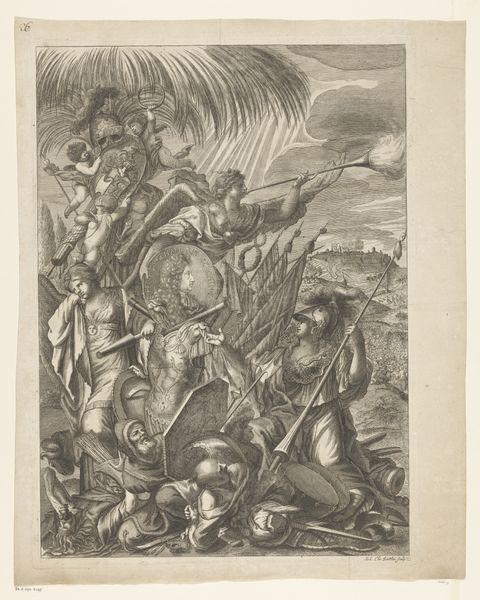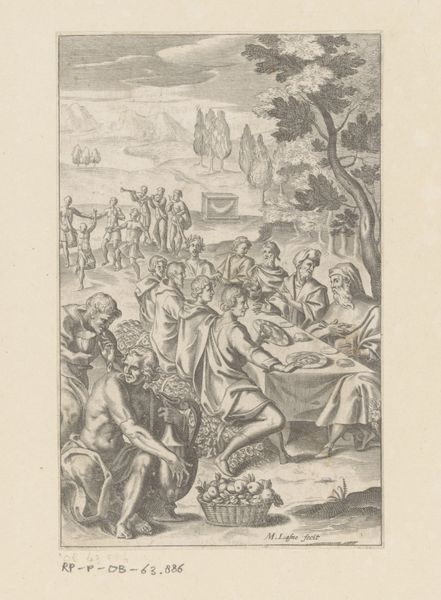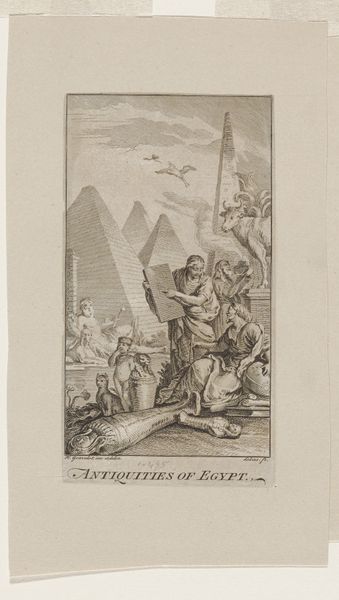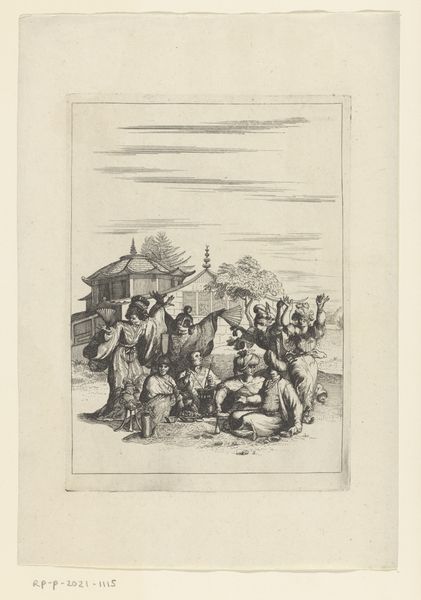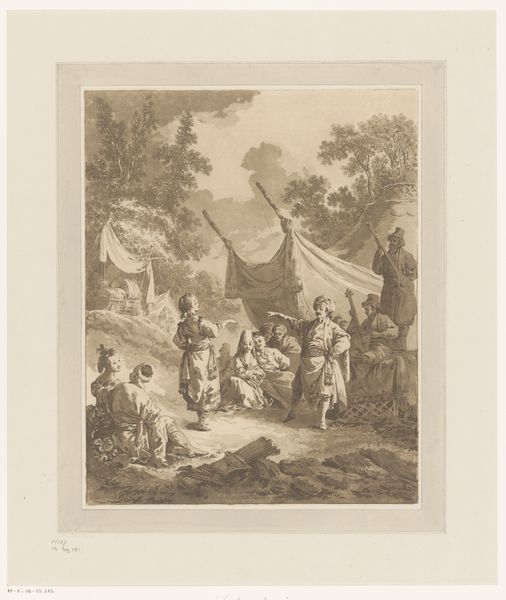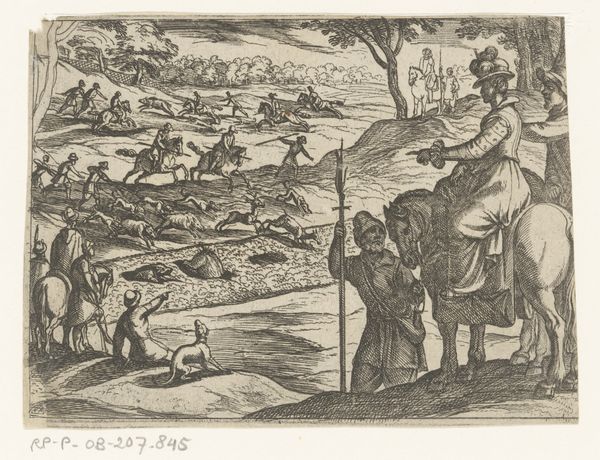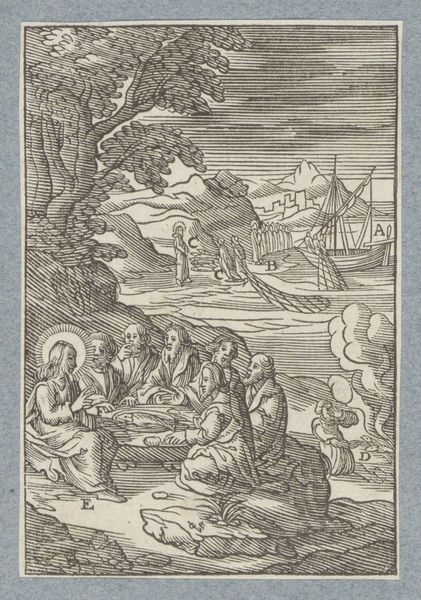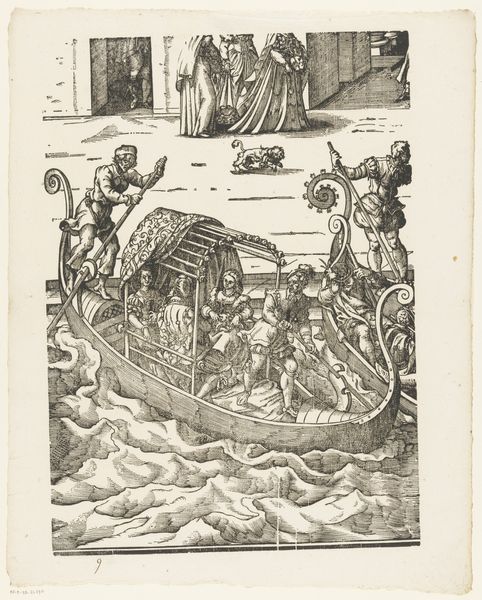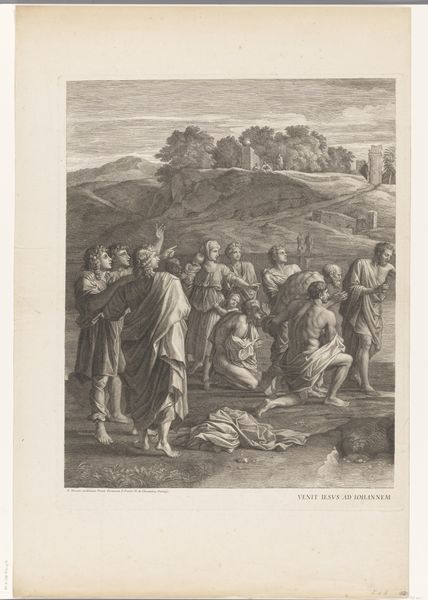
Menandre en Lerice met hun dochter Silvanire vinden op weg naar de tempel Agalante uitgeput in de armen van Hylas 1608 - 1688
0:00
0:00
claudemellan
Rijksmuseum
engraving
#
narrative-art
#
baroque
#
old engraving style
#
traditional media
#
figuration
#
line
#
history-painting
#
engraving
Dimensions: height 170 mm, width 117 mm
Copyright: Rijks Museum: Open Domain
Curator: Here we have a 17th-century engraving by Claude Mellan, titled "Menandre en Lerice met hun dochter Silvanire vinden op weg naar de tempel Agalante uitgeput in de armen van Hylas.” It's currently housed right here at the Rijksmuseum. Editor: Woah, that's a mouthful! But visually… it's intensely theatrical. So much grief! So much melodrama. I see classical robes and some people up to something mysterious at the top of the hill; almost feels like watching a stage play about to climax. Curator: That's astute. Mellan, deeply influenced by Baroque sensibilities, aims for emotional impact. The narrative comes from a French pastoral tragicomedy, exploring love, betrayal, and reconciliation. Consider how social expectations are framed within this dramatic tableau. Editor: Reconciliation, huh? I'm picking up vibes of complicated familial drama for sure. I feel bad judging too harshly. So everyone just "happened" upon the fainting figures there in the grass? Sounds like an overwrought script to me… though it does spark the imagination to question what kind of hidden stories would drive someone to be so despondent. It has me hooked in some strange way. Curator: It's not just happenstance. The engraving illustrates a crucial plot point. The composition, while seemingly chaotic, directs our eyes strategically. What looks like pure emotional outburst becomes legible when you consider the social relationships rendered. Notice, also, how Mellan plays with light and shadow. This wasn't created in a vacuum. It existed to illustrate class relationships and gender expectations of the time. Editor: Okay, point taken about societal norms. Now I am noticing how the crisp, controlled lines almost undermine the characters' distress...as though it's all…performative. Maybe that's why I like it! But, more philosophically, do we buy it today? Can this connect still? I guess art making me think critically is what it is all about. Curator: Indeed, those tensions make Mellan’s piece engaging to explore today. We might ask if the intense expressions of grief seem somewhat stylized, but the work compels us to examine enduring themes of family crisis across time periods. Editor: Precisely. It started with emotional overdrive that initially seemed cheesy and, if I'm honest, then forced, and turned to contemplation, with hints of social questions...That's a neat ride! I guess Baroque drama does, in the end, invite us to look closer.
Comments
No comments
Be the first to comment and join the conversation on the ultimate creative platform.
